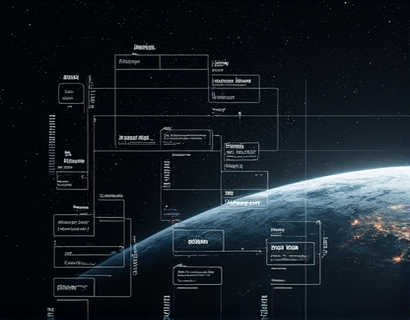Maximizing Leadership Impact: A Comprehensive Dashboard for Efficient Team Management and Enhanced Productivity
In today's fast-paced business environment, effective leadership is crucial for driving success and maintaining a competitive edge. Leaders across various industries face the challenge of managing large, diverse teams while ensuring seamless communication, informed decision-making, and optimal productivity. To address these challenges, a comprehensive dashboard has been developed, designed to empower leaders with the tools necessary to streamline management processes and enhance team performance. This article delves into the features and benefits of such a dashboard, highlighting how it can transform leadership effectiveness and organizational efficiency.
Understanding the Need for a Comprehensive Dashboard
Leadership in modern organizations is not just about setting goals and providing direction; it involves managing complex teams, monitoring performance, and making data-driven decisions. Traditional management methods often fall short in handling the scale and diversity of today's workforces. A comprehensive dashboard addresses these shortcomings by offering a centralized platform that integrates various aspects of team management. This platform provides real-time insights, automates routine tasks, and facilitates better communication, ultimately leading to enhanced productivity and efficiency.
Key Features of the Dashboard
The dashboard is equipped with a suite of features tailored to meet the needs of leaders in diverse industries. These features include:
- Real-Time Performance Metrics: Leaders can monitor key performance indicators (KPIs) for individual team members and the team as a whole. These metrics provide immediate feedback on progress and help identify areas that require attention.
- Communication Tools: Integrated messaging and notification systems ensure that information flows smoothly within the team. This reduces the likelihood of miscommunication and ensures that everyone is on the same page.
- Task and Project Management: The dashboard allows leaders to assign tasks, set deadlines, and track progress. This feature helps in maintaining a clear overview of ongoing projects and ensures that deadlines are met.
- Customizable Dashboards: Leaders can personalize their dashboard to focus on the metrics and tools that are most relevant to their team and objectives. This customization enhances usability and ensures that the dashboard remains a valuable resource.
- Reporting and Analytics: Comprehensive reporting tools provide in-depth analytics, enabling leaders to make informed decisions based on data. These reports can be customized to focus on specific aspects of team performance and organizational health.
Enhancing Communication and Collaboration
Effective communication is the backbone of any successful team. The dashboard's communication tools are designed to break down barriers and foster a collaborative environment. Key benefits include:
- Centralized Communication Hub: All team communications are centralized in one place, reducing the clutter of multiple messaging platforms and ensuring that important information is not missed.
- Notification System: Customizable notifications keep team members informed about updates, task assignments, and deadlines without overwhelming them with constant alerts.
- File Sharing and Collaboration: The ability to share files and documents directly within the dashboard streamlines the workflow and ensures that everyone has access to the latest versions of files.
These features not only improve communication but also build trust and transparency within the team, leading to a more cohesive and productive work environment.
Streamlining Decision-Making Processes
Data-driven decision-making is essential for leaders aiming to optimize team performance and drive business growth. The dashboard's analytics and reporting tools play a pivotal role in this process by:
- Providing Real-Time Insights: Leaders can access up-to-date information on team performance, project status, and other critical metrics, allowing for timely and informed decisions.
- Identifying Trends and Patterns: Advanced analytics help identify trends and patterns that might not be immediately obvious, enabling proactive rather than reactive management.
- Comparative Analysis: The ability to compare performance across different teams or projects helps in identifying best practices and areas for improvement.
By leveraging these tools, leaders can make more accurate and strategic decisions, ultimately leading to enhanced productivity and better outcomes.
Improving Productivity and Efficiency
The overarching goal of the dashboard is to improve productivity and efficiency across the organization. Here’s how it achieves this:
- Automation of Routine Tasks: Automating repetitive tasks such as scheduling, reminders, and status updates frees up time for leaders to focus on high-impact activities.
- Optimized Workflows: The dashboard helps in identifying bottlenecks and inefficiencies in workflows, allowing for targeted improvements that enhance overall productivity.
- Resource Allocation: By providing a clear view of team capabilities and project requirements, leaders can allocate resources more effectively, ensuring that the right people are working on the right tasks.
These improvements contribute to a more agile and responsive organization, capable of adapting to changing market conditions and customer needs.
Case Studies and Success Stories
Several organizations across diverse industries have successfully implemented the comprehensive dashboard, achieving significant improvements in team management and productivity. For instance:
- Tech Industry: A leading software development company reported a 30% increase in project completion rates and a 25% reduction in project delays after implementing the dashboard. The real-time tracking of development milestones and seamless communication between teams were key factors in this success.
- Healthcare Sector: A major hospital network saw a 20% improvement in operational efficiency and a 15% reduction in patient wait times. The dashboard's task management and resource allocation features enabled better coordination among departments, leading to improved patient care.
- Manufacturing: A manufacturing firm experienced a 20% increase in production output and a 10% reduction in operational costs. The dashboard's performance metrics and predictive analytics helped in optimizing production schedules and maintenance routines.
These success stories demonstrate the versatility and effectiveness of the dashboard in various sectors, underscoring its potential to drive meaningful change in any organization.
Conclusion
In conclusion, a comprehensive dashboard for team management offers a powerful solution for leaders looking to maximize their impact. By integrating real-time performance metrics, advanced communication tools, and robust analytics, the dashboard empowers leaders to enhance communication, streamline decision-making, and improve productivity. As organizations continue to grow and evolve, such tools become indispensable in maintaining a competitive edge and achieving long-term success. Embracing this technology is not just an option but a necessity for modern leadership.










































